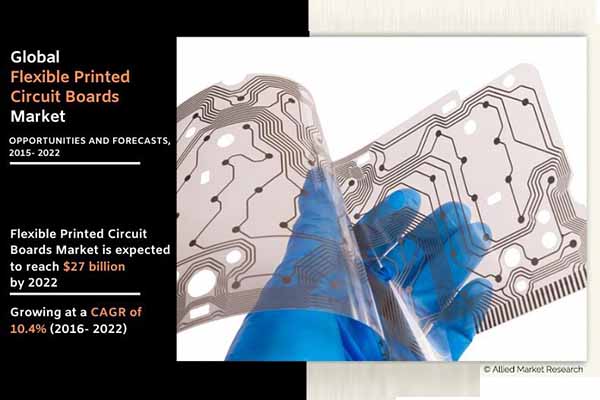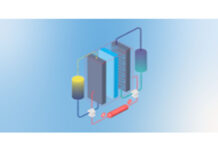The circuit board design is becoming more and more high-precision and high-density. FPCBs is a light-weight electrical circuit made of polyimide or polyester film. It is highly reliable with the characteristics of high wiring density, thin thickness, simple structuring, and good bendability & foldability. FPCBs consist of conductive metal strips, usually copper, insulated by a dielectric material or solder mask. Because of their flexible substrates, Flexible Printed Circuit Boards are used for a wide array of electronic devices with complex circuitry and minute electronic parts. Compared to traditional rigid boards and cabling, FPCBs are easier to assemble and need lesser time as well as cost.
Flexible printed circuit boards are available in a variety of configurations, sizes, and functionalities. The basic types of Flexible Printed Circuit Boards include single layer, double layer, multi-layer and rigid flex.
- Single-sided FPCBs consists of a single layer of metal traced on one side of the dielectric layer, while double-sided Flexible Printed Circuit Boards have metal layers on both sides of the dielectric layer.
- Multi-layer boards, on the other hand, feature numerous separate copper layers encapsulated by dielectric layers. Multi-layer Flexible Printed Circuit Boards can include up to 20 layers and handle a high circuit density with multiple conductive layers.
- The rigid-flex PCB is a combination of both rigid and flexible circuit boards that provide a relatively higher component density compared to other circuit boards.
According to a report published by Allied Market Research, the global flexible printed circuit boards market size was anticipated to reach $27.0 billion with a considerable CAGR from 2016 to 2022. The Asia-Pacific region held the major market share in 2015 and also maintained its dominance in 2022. The LAMEA, on the other hand, witnessed the fastest growth rate during the forecasted period.
However, the outbreak of the COVID-19 pandemic had a slight negative impact on the growth of the global flexible printed circuit boards market in 2020 & 2021. This was attributed to implementation of the global lockdown which led to temporary closure of manufacturing facilities, disruptions in the supply chain, unavailability of raw materials, and shortage of skilled labor force. Nevertheless, the market has already recovered in the post-pandemic.
Furthermore, in order to stay competitive in the market, the major players are adopting different strategies to drive sales using highly influential marketing approaches. Also, in the world where electronic waste is a huge concern, companies are trying to develop 3D printing technology for PCB manufacturing because it reduces human error and produces less waste.
Flexible Printed Circuits are indeed the only solution to meet the miniaturization and mobile requirements of electronic products. To conclude, it is worth mentioning that he global flexible printed circuit boards market has a huge scope to gain immense growth opportunities in the near future, owing to rising demand for electronic products such as LCDs, smartphones, tablet, PCs, and many others, technological advancements & developments in consumer electronics, increase in portable appliances, and rise in the adoption of FPCBs in automotive applications.















